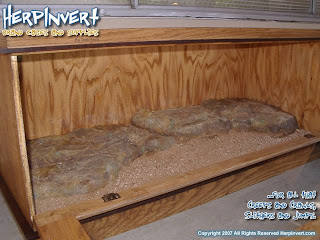Creating a Safe and Comfortable PVC Bearded Dragon Enclosure for Your Pet
Overview of PVC Bearded Dragon Enclosures
When it comes to housing your bearded dragon, a PVC enclosure can be a great option to consider. PVC, or polyvinyl chloride, is a type of plastic material that is durable, lightweight, and easy to clean. It’s also non-toxic and resistant to moisture and heat, making it an ideal choice for reptile enclosures.
PVC bearded dragon enclosures come in different sizes and designs, so you’ll need to choose one that suits your pet’s needs. The enclosure should be spacious enough to provide your bearded dragon with plenty of room to move around, climb, bask under a heat lamp, and hide in a shelter or cave.
Benefits of PVC Bearded Dragon Enclosures
PVC bearded dragon enclosures offer several advantages over other types of enclosures. Here are some of the benefits you can expect:
- Durable and long-lasting
- Lightweight and easy to move
- Resistant to moisture, heat, and scratches
- Easy to clean and disinfect
- Non-toxic and safe for your pet
- Customizable with accessories and decorations
Setting Up Your PVC Bearded Dragon Enclosure
Now that you’ve decided to get a PVC bearded dragon enclosure, it’s time to set it up properly. Here are the steps to follow:
Step 1: Choose the Right Size
As mentioned earlier, your bearded dragon needs enough space to move and feel comfortable. The ideal size for an adult bearded dragon is at least 4x2x2 feet, while a juvenile can be housed in a smaller enclosure. Make sure your enclosure has enough height to accommodate branches, logs, or shelves for climbing and basking.
Step 2: Add Substrate
Substrate refers to the material that lines the bottom of your enclosure. This is important for absorbing waste and providing traction for your bearded dragon’s feet. Some common substrate options include reptile carpet, paper towels, ceramic tiles, or coconut coir. Avoid using loose substrates like sand, gravel, or wood chips, which can cause impaction if ingested.
Step 3: Install Lighting and Heating
Bearded dragons need UVB lighting and a heat source to survive and thrive. UVB lighting is essential for proper calcium metabolism and vitamin D production, which prevent bone disease and promote overall health. A basking lamp or ceramic heat emitter can provide the necessary heat gradient, with a basking spot of 100-110°F and a cool side of 80-85°F. Use a thermometer to monitor the temperatures and adjust accordingly.
Step 4: Provide Enrichment
Enrichment refers to the toys, decorations, and hiding places that stimulate your bearded dragon’s natural behaviors and instincts. You can add some branches, logs, PVC pipes, or rocks for climbing and perching, along with some fake plants, hides, or hammocks for resting and exploring. Avoid anything that is sharp, toxic, or easy to ingest.
Step 5: Maintain Proper Hygiene
Keeping your PVC bearded dragon enclosure clean and hygienic is crucial for your pet’s health and happiness. Make sure to spot-clean any feces or debris daily, and deep-clean the enclosure once a month or as needed. Use a reptile-safe disinfectant and rinse thoroughly afterward. Replace the substrate and accessories regularly, and check for any signs of illness or injury in your bearded dragon.
Conclusion
A PVC bearded dragon enclosure can be a smart and safe choice for your pet reptile. By following these tips and guidelines, you can create a comfortable and enriching space for your bearded dragon to live and grow. Remember to do your research, consult with a veterinarian or herpetologist, and provide the best care possible for your beloved pet.










